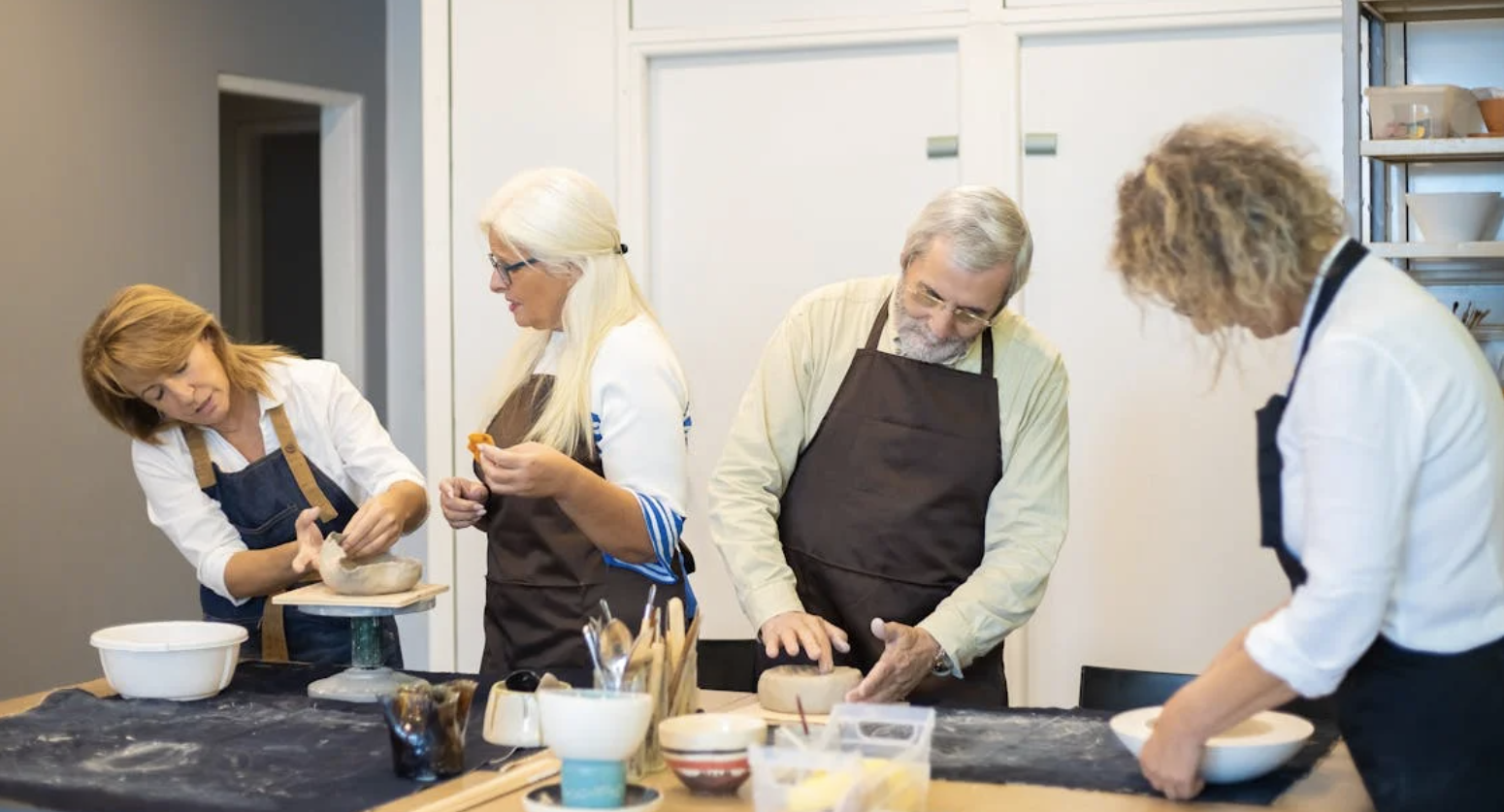Speak to a local care advisor at Assisted Living Locators by calling (888)-267-4741.
Learn about Assisted Living, Senior Living, Memory Care, and In-home care options.
Common Misconceptions About All Senior Living
Retirement means freedom — to spend your time as you wish and enjoy life however you want. While you’re free from the obligations of work, however, your obligations at home remain. Perhaps the usual home upkeep provides you with the comfort of daily familiarity, but there are also some stressful tasks that you’d rather do away with.
Spending your golden years with a carefree lifestyle and fewer worries is possible through senior living facilities. There are a lot of misconceptions about retirement and especially where retirement homes are concerned. But independent senior living is more about rediscovering life and not at all about losing your purpose and place in life. There is fulfillment and joy to be found in an independent senior living community.
Many retired seniors don’t want to even consider senior living options because of common but incorrect preconceived notions about such communities. Let’s take a look at 14 common misconceptions to help set your mind at ease.
1 Senior Living Communities are Nursing Homes
There are different kinds of senior communities, and senior living or independent senior living is only one of them. Senior living is for older adults who are still physically and mentally healthy, although some may have a condition that requires regular medication; they are still highly self-sufficient when it comes to their personal care, such as bathing, going to the toilet, getting dressed, and eating.
Independent senior living offers a zero- or low-maintenance lifestyle in terms of basic household maintenance. Depending on your personal needs and preferences, you may have all your meals cooked, for example, or your laundry taken care of; transportation services are also an option, in case you don’t want to or can’t drive, while housekeeping, home repairs, and even lawn maintenance are typically part of the basic package.
Assisted living facilities and nursing homes, on the other hand, are for seniors who require varying levels of personal care assistance and/or specialized nursing or medical care.
2 Senior Living is Only for the Sick
On the contrary, senior living is for older adults who are still very much healthy and only want to enjoy a more carefree and laid-back lifestyle, with fewer or zero home obligations. As mentioned above, residents in an independent senior living community are still highly independent and can take care of their basic needs; they do not require specialized nursing care, although they may already be taking maintenance medication.
Senior living is more like having a pampered lifestyle; it allows you to spend your golden years as if you’re on a long-term vacation — free to engage in activities you enjoy and find fulfilling.
3 Senior Living Residents Live Unhappy, Unsatisfying Lives
With the freedom to spend their time as they please and pursue their interests, senior living residents actually live long, happy, and fulfilling lives. Especially because senior living communities are designed to encourage physical activity, promote mental and emotional health, and foster social engagement by providing walkable neighborhoods, wellness programs, and recreational activities, there is no room at all for boredom and dissatisfaction.
There is something for everyone. Even if you prefer spending most of your time on your own, there are still plenty of opportunities to engage your passions. In fact, there may be more things to keep you happily occupied in a senior living community than in your own home.
4 A Senior Living Community Disconnects You from the Outside World
Nothing can be farther from the truth. Residents are free to move in and out of the community. They can even drive themselves if they are able, or avail of the community’s transportation services. They can go outside to run errands, visit family and friends, eat out, watch a movie, or take part in community volunteer programs. Likewise, family and friends are welcome to visit and even sleep over.
5 A Senior Living Community is a Health Institution
An independent senior living community is mostly a residential complex exclusively for seniors who are still capable of living independently and have no need for constant medical care. The community may be a mix of studio, one-bedroom, and two-bedroom apartments, and also offer the same amenities and security as any exclusive and gated community. The community does not operate as a health institution and, therefore, is not required to have the applicable permits and licenses for specialized care facilities, such as nursing homes and rehab facilities.
6 A Senior Living Community is a Step Closer to a Nursing Home
While it’s true that some independent senior living residents eventually move into a facility that provides more specialized care as necessitated by a change in their health and care needs, it’s just as true that many residents live out the rest of their years within the community. Some stay one, three, or five years before requiring expert nursing care in a different facility; for others, it can be their permanent home. Some communities may even offer the option of having private nursing care or in-home caregiver service, so the resident need not transfer.
7 Senior Living Communities are Expensive
The cost of senior living varies per state and depends on the specific location, type of accommodation, and the types of amenities and services included. For example, you can expect a lakeside community to be on the higher end of the price range. The price range may be anywhere between $1,500 and $6,000 per month.
Many communities offer all-inclusive monthly fees, which means the base fee covers rent, housekeeping, utilities, meals, and basic amenities. Some communities offer “a la carte” options, wherein you only pay for offered services when you avail of them.
8 Senior Living Communities Offer Limited Housing Options
Depending on your budget and preferences, most senior living communities offer different types of accommodations, from studio apartments, to one-bedroom or two-bedroom apartments or even cottages. You may choose a residence with a full-sized or scaled-down kitchen, depending on how much cooking you want to do.
Some also offer different floor plans, with options for the number of toilets and baths, a porch, and a garage.
9 The Food Service is Bad
If you prefer to have some or all of your meals cooked, and especially if you have special dietary requirements, you can find a high-quality senior living community that employs chefs and/or nutritionists to create delicious and nutritious meals for its residents.
Some communities offer full-service meals with several food options for breakfast, lunch, dinner, snacks, and drinks; or you may opt for just three, full meals. Others offer a standard daily menu. Depending on your preferences and budget, you may have your meals prepared at or delivered to your home, or you may eat at the community’s common dining area.
10 You Can’t Keep a Pet
Many communities allow residents to keep pets, although there may be some rules and restrictions regarding the type of pet, as well as the size and number. Keep in mind that some communities may require additional fees for pets.
11 Being a Resident in a Senior Living Community is Depressing and Embarrassing
Getting older and choosing to move into an independent senior living community should not be a source of embarrassment. There are a lot of stereotypes about senior communities that persist to this day, but the happy and fulfilling lives led by residents are disproving these preconceived notions. You only need to visit a senior living community to see that it actually improves quality of life and provides so many comforts and even simple luxuries that you deserve.
12 Transitioning Into Your New Life Within the Community is Difficult
Being around other people your age and with the same goal of living a comfortable, carefree, and fulfilling life will help your transition as a resident go smoothly. Leaving behind the home and life you’ve cherished for most of your adult life is sad, of course; but the new chapter that awaits offers many, exciting possibilities.
13 Life in a Senior Living Community is a Lonely One
Daily life in a senior living community is filled with so many wonderful options for social engagement. You can join a yoga or meditation class; take part in recreational activities with others who have similar interests; join a book club; do volunteer work outside the community; participate in sports; or even go out with your new friends or get-together with your loved ones for lunch or a movie.
14 Moving Into a Senior Living Community is the Beginning of the End
On the contrary, it’s the beginning of a new chapter in your life. It’s an opportunity for you to rediscover old interests or explore new ones; learn a new skill; forge new and lasting relationships, and just spend your time doing things that make you happy. An independent senior living community can help you live more healthfully and motivate you to live life to the fullest.
Final Thoughts
If you are an older adult who wants to enjoy a carefree and laid-back life of retirement and have no need of specialized care or assistance with basic personal care, then an independent senior living community is a great option for you.
Whether you’re a highly social individual or you prefer to spend most of your time alone; whatever your passions and interests, lifestyle and housing preferences, you’ll find a community that suitably meets your needs.
There are many negative preconceived notions about life in a senior living community, but the many wonderful options available today actually make moving into such a community feel like a well-deserved reward for all your hard work.












